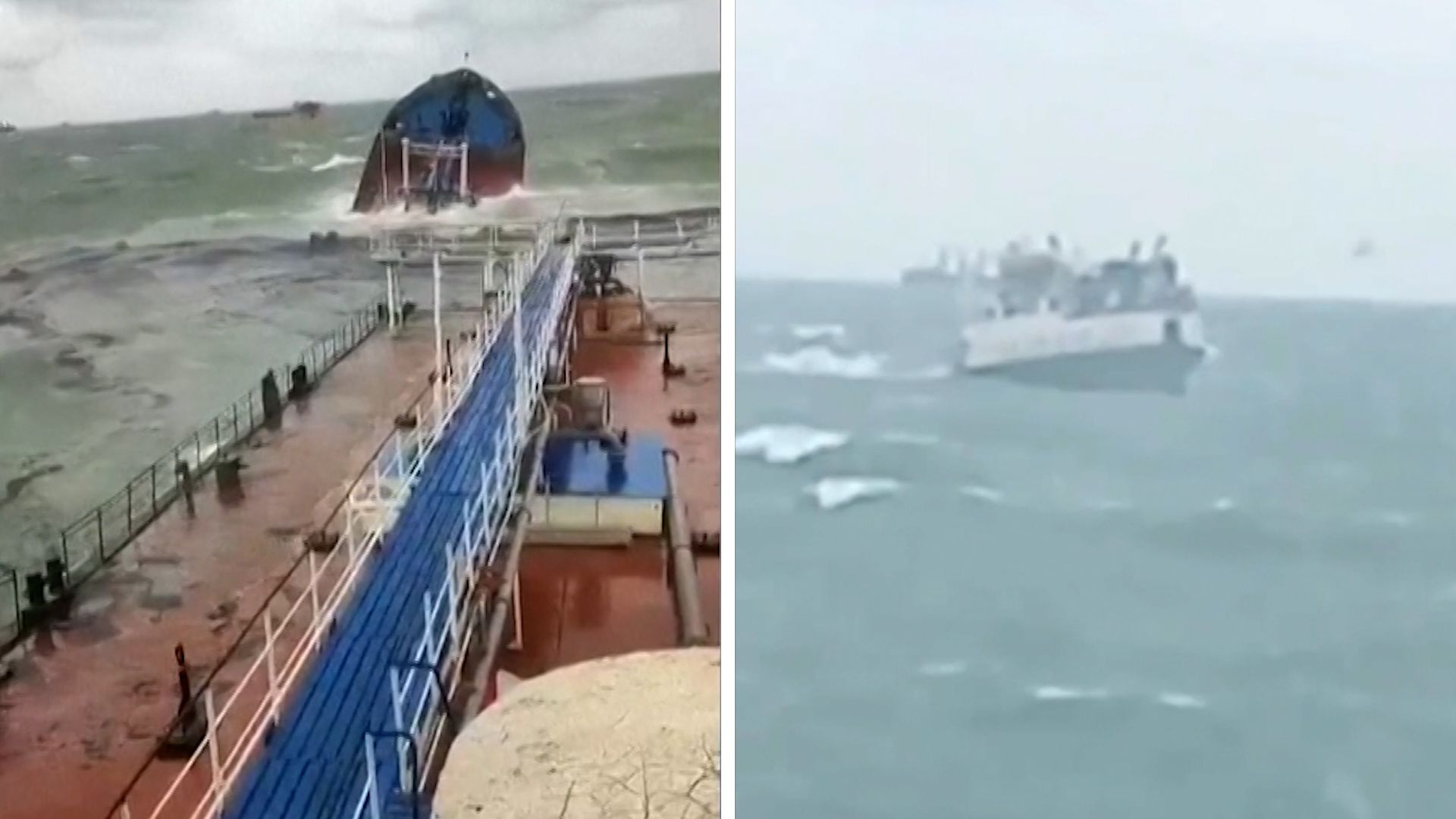The Mediterranean Sea witnessed a maritime tragedy when the Russian cargo ship Ursa Major sank following an explosion in its engine room.
The incident, which occurred between Spain and Algeria, has left two crew members missing while 14 others were rescued and brought to Spain. This catastrophic event raises questions about the ship’s mission, its structural integrity, and the circumstances surrounding the explosion.
The Incident: Explosion and Rescue Efforts
The explosion that led to the sinking of the Ursa Major occurred on December 23, 2024, and was reportedly located in the ship’s engine room.
The vessel, controlled by Oboronlogistika—a company affiliated with the Russian defense ministry—was en route from St. Petersburg to Vladivostok. The ship was carrying two massive port cranes and components for new icebreakers, vital cargo intended for Russia’s eastern port city.
Unverified video footage captured the Ursa Major listing heavily to its starboard side, with its bow submerged lower than usual. The footage, published by Russia’s Life.ru, confirmed the dire situation as the ship struggled to stay afloat. By the time rescue efforts were mobilized, the ship had sunk, leaving behind two missing crew members.
Read : Russian tanker sinks in Black Sea Spilling 4,300 Tonnes of Oil: Watch
The Spanish navy, in collaboration with other vessels, played a critical role in rescuing 14 of the ship’s 16 crew members. The survivors were evacuated to the Spanish port of Cartagena, where they received medical attention and were debriefed about the incident. Despite these efforts, the fate of the missing crew remains uncertain.
The Journey of the Ursa Major
The Ursa Major began its journey from the Russian port of St. Petersburg on December 11, 2024. According to LSEG ship tracking data, its declared destination was Vladivostok, where it was expected to arrive on January 22, 2025. This route would take the vessel through critical waterways, including the Mediterranean Sea.
Two crew members are missing after a Russian cargo ship, Ursa Major, sank in the Mediterranean following an engine room explosion. Of the 16 crew members, 14 were rescued, and the ship was carrying harbour cranes and hatch covers for icebreakers. pic.twitter.com/XrtQOzlIXf
— BigBreakingWire (@BigBreakingWire) December 24, 2024
Interestingly, the ship’s route and cargo have drawn significant attention. While the declared destination was Vladivostok, some speculated about the possibility of the ship making an unscheduled stop at the Syrian port of Tartous—a location it had visited in the past. However, no evidence has surfaced to confirm this theory.
Oboronlogistika, the ultimate owner of the ship, confirmed that it was transporting specialized port cranes and icebreaker components. These cranes were crucial for operations in Vladivostok, a major Russian port in the Far East. The ship’s cargo underscores the importance of the Ursa Major in supporting Russia’s maritime infrastructure and ice navigation capabilities.
Unanswered Questions and Broader Implications
The sinking of the Ursa Major leaves behind a trail of unanswered questions. Chief among them is the cause of the explosion in the engine room. While no official explanation has been provided, engine room incidents are often linked to mechanical failures, maintenance issues, or unforeseen external factors.
The vessel’s history and ownership add another layer of intrigue. Built in 2009, the ship was previously known as Sparta III before being renamed Ursa Major. Its operator, SK-Yug, is a subsidiary of Oboronlogistika, which is part of the Russian defense ministry’s military construction operations. The ship’s ownership and purpose have fueled speculation about its role beyond commercial cargo transport.

Moreover, the incident highlights the risks associated with maritime transport, especially for vessels carrying oversized and specialized cargo. The two giant cranes strapped to the deck would have posed additional challenges in maintaining stability, particularly in rough sea conditions.
The involvement of multiple nations in the rescue operation—most notably Spain—underscores the collaborative nature of maritime safety. Spanish naval forces played a pivotal role in ensuring the survival of most of the crew, demonstrating the importance of international cooperation in addressing such crises.
The sinking of the Ursa Major is a sobering reminder of the dangers faced by those who work at sea. While the immediate priority is to locate the two missing crew members and provide support to the survivors, the broader implications of the incident cannot be ignored. Questions about the ship’s mission, its maintenance standards, and the circumstances of the explosion warrant thorough investigation.
As the maritime industry continues to evolve, ensuring the safety of vessels, their crew, and their cargo must remain a top priority. The tragedy of the Ursa Major serves as a call to action for greater transparency, improved safety protocols, and international collaboration to prevent similar incidents in the future.

